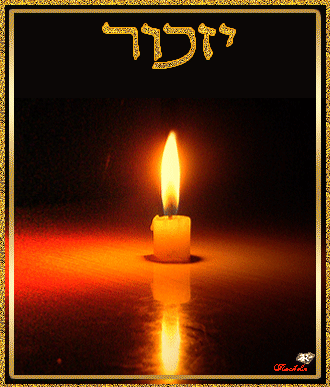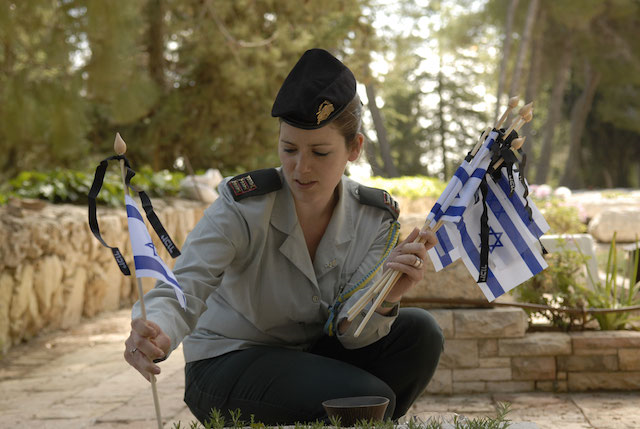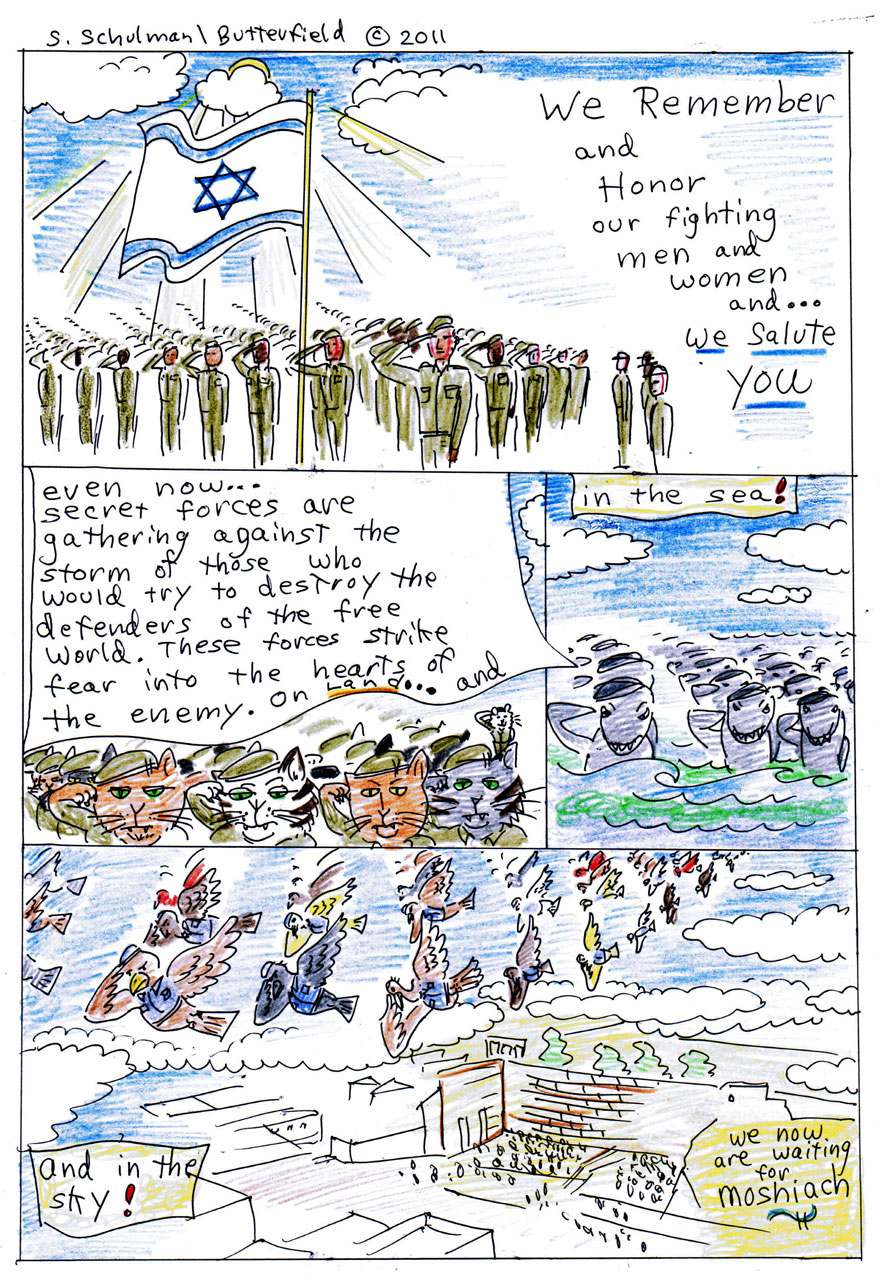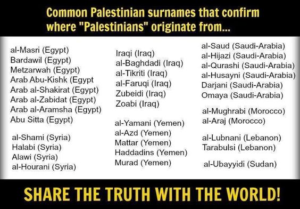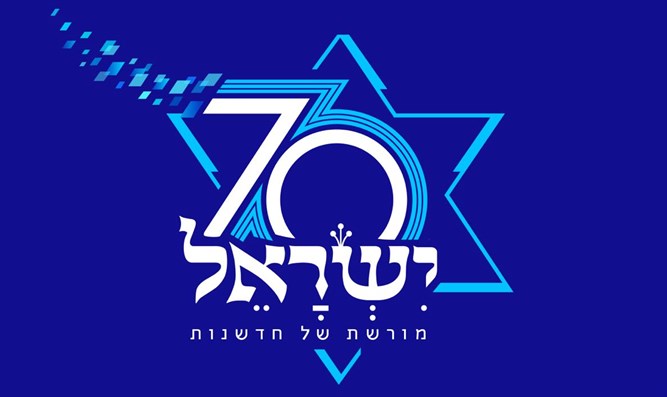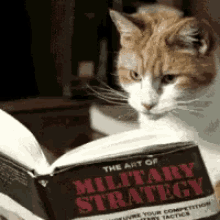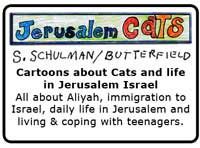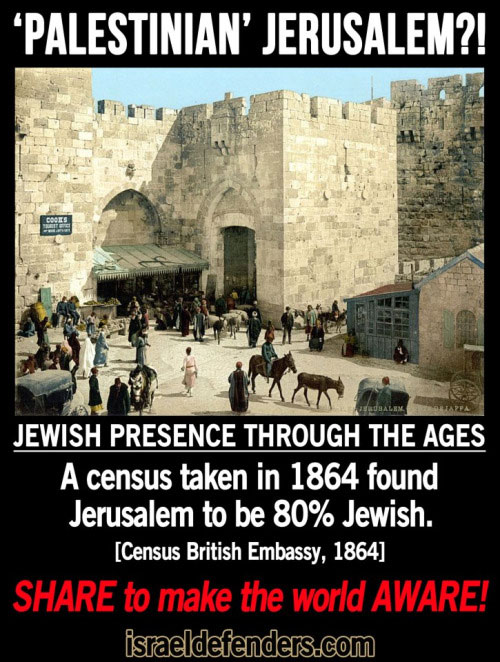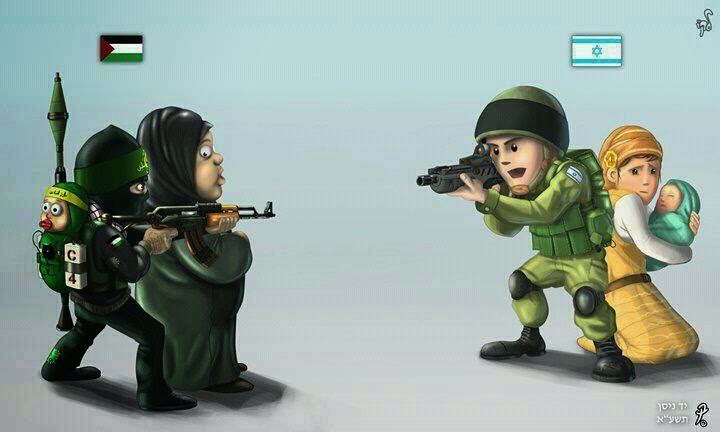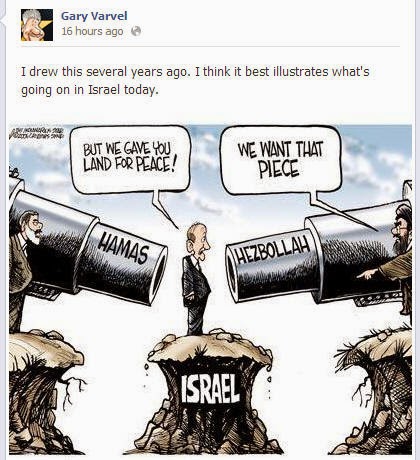Yom HazikaronFrom Wikipedia, the free encyclopedia Yom Hazikaron (יום הזיכרון לחללי מערכות ישראל ולנפגעי פעולות האיבה, lit. Day of Remembrance for Israeli Fallen Soldiers and Victims of Terrorism) is Israel’s official Memorial Day. The national observance was enacted into law in 1963. While Yom Hazikaron has been traditionally dedicated to fallen soldiers, commemoration has now been extended to civilian victims of the ongoing armed dispute. The Miracle of Ad HalomBy: Rabbi Lazer Brody 25April2009 https://breslev.com/325505/ Israel’s Memorial Day, Yom HaZikaron, begins this year on Sunday evening, April 14, 2013. Israel never forgets its debt of eternal gratitude to its sons and daughters who gave their lives for the achievement of the country’s independence and its continued existence. It is a day of collective and personal heartache mingled with awe and honor for our holy martyrs. When looking at Israeli military history, most people consider the Six-Day War of 1967 as Hashem’s greatest miracle of modern times. My choice would be the War of Independence of 1948-49. The “Ad Halom” Memorial commemorates the courageous soldiers that sacrificed their lives to stop the advancement of the Egyptian Army northward in the Israel Independence War of 1948 In the initial stage of the War of Independence, the Egyptian, Syrian, Iraqi and Jordanian armies scored notable successes. It looked like the tiny Jewish nation would be finished before it began its modern-day rebirth. The formidable Egyptian army – backed by tanks, artillery, armor and aircraft, which Israel did not have – were able to cut off the entire Negev and to occupy parts of the land that had been allocated to the Jewish state, reaching as far north as Ashdod. The Jordanian Legion succeeded in defending their key position in Latrun after a bloody aborted attempt by an untrained and inexperienced Israeli assault force that included quite a few Holocaust survivors that had recently arrived in Israel from the deportation camps of Europe. They also overran and captured Gush Etzion. The Iraqis had almost reached the Mediterranean and the Syrians were dangerously near Haifa. Jerusalem, with 100,000 Jews was virtually cut off from the rest of Israel. Hacked to pieces in this way, Israel was not very far from collapse in June of 1948. “The Pillbox” – the Hagana gun emplacement that guarded the Ad Halom bridge outside of Ashdod 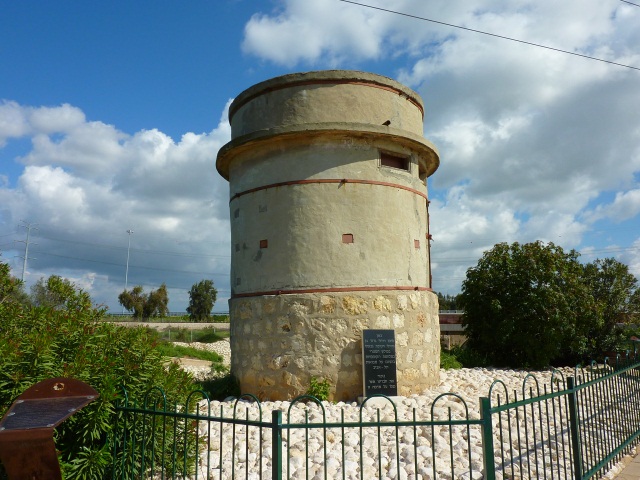 The Miracle of Ad Halom “The Pillbox” – the Hagana gun emplacement that guarded the Ad Halom bridge outside of Ashdod The Israeli Army then was not much more than new immigrants from Europe and Morocco with a few kibbutznik commanders. Many of the soldiers had no firearms. Some had never shot a rifle and had little idea of what to do in a battle. If a “rare” machine gun broke down or needed assembly, it was necessary to wait for a rare expert to come along who knew how to assemble and repair machine guns. Most of the Israel’s soldiers had had little or no training. Thousands of them were new immigrants rushed off the boats and given guns, most unable to speak Hebrew and understand commands. The Egyptian Army dealt a nasty blow to the Givati brigade in the Battle of Nitzanim, a mile south of Ashdod. It looked like nothing could stop the Egyptians from reaching Tel Aviv; then, the war would be over and so would the State of Israel, Heaven forbid. The morale of the Egyptians was high and the Egyptian press and people were already celebrating. First, they seized Gaza, then Majdal (Ashkelon), then Beersheba and now Nitzanim with Ashdod next on the list. By Egyptian calculations, Israel’s ill-equipped armies and settlements would fall swiftly. Egypt also hoped to reach the Ramle area to link up with the Arab Legion’s forces at Latrun. Such a move would be a mortal blow to the Jewish forces. Yet Hashem had other plans. An Egyptian column of some 500 vehicles was making its way up the Coastal Road towards Tel Aviv. The column was confronted by a bold company of Givati soldiers who had miraculously exploded the sturdy Turkish bridge over the Lachish river at the Southern entrance of Ashdod to delay the Egyptian advance. Barely 20 miles separated the enemy from its objective. With no time to waste before the Egyptians could circumvent the bombed out “Ad Halom” (“up to here” in Hebrew, the northernmost point of the Egyptian thrust into Israel) bridge, Israel tried its first aerial attack. Lou Lenart, an experienced American volunteer, was selected to lead the historic mission. He was joined by Moddy Alon, Ezer Weizman, and Eddie Cohen. Each plane swooped down on the enemy with two 70-kg bombs. They tried to strafe the Egyptian column despite heavy ground fire. Unfortunately, the Messerschmitts’ untested 20 mm cannons and machine guns jammed quickly and the few rounds that they fired didn’t inflict much damage. But the psychological effect was enormous. The surprised Egyptians thought they were being hit by a massive air bombardment. They panicked and scattered all over the adjacent sand dunes. By the time they regrouped, they had lost the offensive. Israel’s outnumbered Givati forces seized the opportunity to launch a counterattack. With Hashem’s loving grace, they stopped the advance in its tracks. The Turkish Bridge (Rebuilt) over the Lachish River at the Ad Halom crossroads – if the Egyptian Army’s progress would not have been thwarted here, then nothing would have stopped them from reaching Tel Aviv The price of success was high: Eddie Cohen, a South African-born pilot, was killed when his Messerschmitt – apparently hit by anti-aircraft fire – crashed and burned trying to land after the mission. As a result, the First Jewish Fighter Squadron lost one-fourth of its aircraft and one-fifth of its pilots on its maiden combat sortie. Eddie Cohen of blessed memory was not the macho type of pilot. Indeed, he was contemplative, calm, scholarly, never daring, and never reckless or adventurous. This anti-hero was the Israeli Air Forces’s first heroic martyr. He merited being Hashem’s emissary in the formidable miracle that turned the tide of Israel’s War of Independence. With an army that wasn’t an army, an air force that wasn’t an air force, and a pilot that preferred classical music and archeology to flying warplanes that weren’t much more than souped-up Piper Cubs, Hashem chose to perform the miracle of Ad-Halom on the outskirts of my beloved hometown of Ashdod. “They have their chariots and they have their horses, but we shall call the Name of Hashem our G-d!” (Psalm 20:8). |
|

Yom Hazikaron: Israel’s Memorial Day
This day honoring fallen soldiers immediately precedes Israel’s Independence Day.By My Jewish Learning http://www.myjewishlearning.com/holidays/Jewish_Holidays/Modern_Holidays/Yom_Hazikaron.shtml The fourth of Iyar, the day preceding Israel’s Independence Day, was declared by the Israeli Knesset (parliament) to be a Memorial Day for those who lost their lives in the struggle that led to the establishment of the State of Israel and for all military personnel who were killed while in active duty in Israel’s armed forces. Joining these two days together conveys a simple message: Israelis owe the independence and the very existence of the Jewish state to the soldiers who sacrificed their lives for it. Yom Hazikaron, the Israeli Memorial Day, is different in its character and mood from the American Memorial Day. For 24 hours (from sunset to sunset) all places of public entertainment (theaters, cinemas, nightclubs, pubs, etc.) are closed. The most noticeable feature of the day is the sound of a siren that is heard throughout the country twice, during which the entire nation observes a two-minutes “standstill” of all traffic and daily activities. The first siren marks the beginning of Memorial Day at 8 p.m., and the second is at 11 a.m., before the public recitation of prayers in the military cemeteries. All radio and television stations broadcast programs portraying the lives and heroic deeds of fallen soldiers. Most of the broadcasting time is devoted to Israeli songs that convey the mood of the day. “Magash Hakesef” (The Silver Platter), a poem written by Nathan Alterman during the 1948 War of Independence, was during the 1950s and ’60s the most common reading for Yom Hazikaron ceremonies. The poem attained a status almost similar to Lincoln’s Gettysburg Address in U.S. culture. During the ’70s, especially following the Six-Day War (June 1967) and the Yom Kippur War (October 1973), numerous new poems and songs commemorating fallen soldiers became popular and often replaced “The Silver Platter” in public ceremonies. “Hare’ut” (“Friendship”), a song composed a year after the 1948 war, had an impressive comeback in the 1980s and ’90s. The late prime minister Yitzhak Rabin considered this poem/song to be his favorite.
The list of fallen soldiers becomes longer every year. The inevitable tendency of radio and television programs is to focus on individual stories of soldiers who lost their lives in recent decades, rather than on those who fought in the pre-state undergrounds and 1948 war, who have fewer surviving immediate family relatives today. Yom Hazikaron is not conceived as a religious commemoration by the majority of Israelis, but as part of the civil culture. The siren sound seems to inspire awe and sanctity no less than any traditional religious ceremony. Outside of Israel, Yom Hazikaron is commemorated as part of Israel Independence Day observance. There is usually a short memorial or a moment of silence preceding the communal Yom Ha’atzmaut celebration. In synagogues that observe Yom Ha’atzmaut, a special reading may be added to the service, often preceding the Kaddish [memorial prayer]. |
|

Inoffensive SavageryBy Pamela Geller 14November2012 https://www.americanthinker.com/articles/2012/11/inoffensive_savagery.html
When is the word “savage” not racist and offensive? In Tunisian citizen Souhir Stephenson’s “Tunisia, a Sad Year Later,” published last Wednesday in the New York Times, she wrote: “Tourism is dwindling. Who wants to vacation among bands of bearded savages raiding embassies, staking their black pirate flag over universities or burning trucks carrying beer?” “Bearded savages.” This appeared in the Times just six weeks after the paper ran a piece calling my American Freedom Defense Initiative (AFDI) subway ads “potentially inflammatory” and quoting Muneer Awad of the Hamas-linked Council on American-Islamic Relations (CAIR) calling me “a bigot and a racist” for the ad, which reads: “In any war between the civilized man and the savage, support the civilized man. Support Israel. Defeat jihad.” Indeed, this ad touched off a nationwide firestorm, with pundits and activists all over the country excoriating me for using the word “savage” to describe Islamic jihadists and supremacists. CNN “journalist” Mona Eltahawy was actually caught in the act of spray-painting over the ad, and was arrested, after which little act of fascism she had the gall to claim that she was merely exercising her freedom of speech. What is the difference between the New York Times’s use of the word savage and the AFDI use? Or Hillary Clinton’s, for that matter? In a statement on September 12, she used the same word to characterize those who had attacked our consulate in Benghazi and murdered Ambassador Chris Stevens and three other American officials: “This was an attack by a small and savage group — not the people or Government of Libya.” Is Clinton’s use of the word savage offensive? In all of these instances, we are all describing the same barbarians: Islamic jihadists who glory in violence and murder. So why is my ad unacceptable, but no one is angry with Souhir Stephenson or the Secretary of State? My use of the word “savage” has been widely decried as “racist” and “dehumanizing.” Critics have invoked the use of the term to describe Native Americans and others in attempts to prove that any use of it is clear evidence of racist and even genocidal inclinations. But is any and every use of the word “savage” really some kind of thinly veiled call for genocide? Nonsense. Franklin Delano Roosevelt called the Nazis “savages.” And they were. Would Muneer Awad call him “a bigot and a racist” as well? Nor do the critics of the AFDI ad have anything at all to say about the very real savagery that is committed in the name of the jihad against Israel. And that in itself raises questions about their real agenda. The AFDI ad refers not to all Muslims, as has often been claimed, but to those jihadis who rejoice in the murders of innocent civilians. The war on Israel is a war on innocent civilians. The targeting of civilians is savage. The murder of Ambassador Stevens was savage. The relentless 60-year campaign of terror against the Jewish people is savage. The torture of hostage Gilad Shalit was savage. The bloody hacking to death of the Fogel family was savage. The Munich Olympic massacre was savage. The unspeakable torture of Ehud Goldwasser was savage. The tens of thousands of rockets fired from Gaza into southern Israel (into schools, homes, etc.) are savage. The vicious Jew-hatred behind this genocide is savage. The endless demonization of the Jewish people in the Palestinian and Arab media is savage. The refusal to recognize the state of Israel as a Jewish state is savage. The list is endless. This kind of savagery goes on in the name of jihad on a daily basis around the world — and my ads are the problem? Souhir Stephenson’s piece in the Times demonstrates the hypocrisy of the ad’s critics, and their moral myopia in identifying the resistance to savagery as worse than the savagery itself. It is time for all genuine supporters of human rights to stand against the savagery that Hillary Clinton identified in Libya and that Souhir Stephenson rightly excoriates in Tunisia, and that is regularly celebrated as heroism in Gaza. But do the guardians of acceptable opinion have the courage to be consistent? Note: I submitted this piece as an op-ed to the New York Times last week, after the Times attacked me for using the word “savage” of jihadists and then using it themselves. Predictably, they never responded. So that just adds to this tale of media bias and irresponsibility. Pamela Geller is the publisher of AtlasShrugs.com and the author of the WND Books title Stop the Islamization of America: A Practical Guide to the Resistance.
|
|
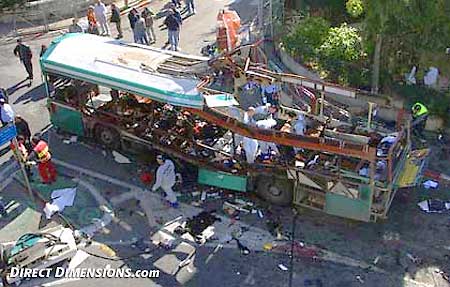 On Jan. 29, 2004, 11 people lost their lives and 50 were wounded in a suicide bombing on Egged Bus 19 in Jerusalem. Since that tragic incident, the remains of Bus 19 have travelled around the world as a reminder of the horrors of terrorism. First stopping at The Hague for the International Court of Justice hearing regarding the Israeli West Bank barrier, the wreckage was then brought to the United States, where it toured among various cities, college campuses, synagogues, and churches. |
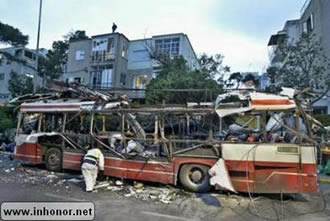 Shmuel HaNavi bus bombing From Wikipedia, the free encyclopedia The Shmuel HaNavi bus bombing was the suicide bombing of a crowded public bus (Egged bus 2) in the Shmuel HaNavi quarter in Jerusalem, Israel, on August 19, 2003. Twenty-four people were killed and over 130 wounded. Many of the victims were children, some of them infants. The Islamist militant group Hamas claimed responsibility for the attack. |
Miracles in Gaza IDF The Israeli Defense Forces |
|
Mother Rachel testimony from IDF soldiers |
|
|
Soldiers saluting the Israeli Flag: “We Remember and Honor our fighting men and women and ..WE SALUTE YOU!”
Yom HaZikaron
Yom Hazikaron (Hebrew: יום הזכרון לחללי מערכות ישראל ולנפגעי פעולות האיבה, lit. Israeli Fallen Soldiers and Victims of Terrorism Remembrance Day) is Israel’s official Memorial Day. Yom Hazikron is the day on which Israel honors its fallen servicemen and women. National memorial services are held in the presence of Israel’s top leadership and military personnel. The day opens the preceding evening at 20:00 (8:00 pm), given that in the Hebrew calendar system days begin at sunset, with a siren. The siren is heard all over the country and lasts for one minute, during which Israelis stop everything (including driving, which stops highways) and stand in silence, commemorating the fallen and showing respect. Many national-religious Jews say prayers for the souls of the fallen soldiers at this time as well. The official ceremony to mark the opening of the day takes place at the Western Wall, at which time the flag of Israel is lowered to half staff. |
|
-
Today19/04/2024 – י״א בניסן ה׳תשפ״ד
-
Please note that this website uses cookies. Continued browsing of the site constitutes consent to this use.
For more information, see the Privacy Policy.לידיעתך, באתר זה נעשה שימוש בקבצי Cookies. המשך גלישה באתר מהווה הסכמה לשימוש זה.
למידע נוסף ניתן לעיין במדיניות הפרטיותWe recommend you turn off your Ad Blocker.
WE DO NOT ADVERTISE ON THIS SITE.
We do run widgets on the side panel.Jewish Agency Toll Free Phone Numbers

Nefesh B’Nefesh: Live the Dream US & CAN 1-866-4-ALIYAH | UK 020-8150-6690 or 0800-085-2105 | Israel 02-659-5800 https://www.nbn.org.il/ info@nbn.org.il
Nefesh B’Nefesh: Live the Dream
US & CAN 1-866-4-ALIYAH | UK 0800 075 7200 | Israel 02-659-5800 www.nbn.org.il
Grocery Shopping in Israel
English, Hebrew transliterated guide with Meat Chart and Oven Temperatures °F to °C
OCTOBER 7TH POSTS
- 7October
- Am Ysroel Chai עם ישראל חי
- ISRAEL AT WAR 5784: 1 sheep and 70 wolves
- Propaganda vs Reality
- UN, UNRWA and Terror
- You vowed ‘Never Again’
- Prayer for the People of Israel During War
- WAR: Hamas missiles on Jerusalem on Shabbat/Shemini Atzeret 5784
- Never Forget, Never Forgive
- Sanctions
- 100th anniversary of the San Remo Conference
CORONAVIRUS POSTS
- Truth or Consequences Covid-19: The Truth
- They Suffered Myocarditis After COVID-19 Vaccination. Years Later, Some Still Haven’t Recovered
- Watchdog: COVID-19 Vaccines Revealed as ‘Neither Safe, Nor Effective’
- Israeli MOH is hiding a study showing a 2-4 times higher rate of adverse events reports following Pfizer COVID vaccine in kids aged 5-11 vs ages 12-17
- Pfizer-Funded Study Shows Poor Effectiveness for COVID-19 Vaccine in Young Children
- Truth or Consequences Covid-19: More Consequences
- Truth or Consequences Covid-19: The Consequences
- Truth or Consequences Covid-19: More Truth
- Truth or Consequences Covid-19: Save the Children
- Truth or Consequences Covid-19: The Grim Reaper Edition
- Truth or Consequences Covid-19
- Coronavirus COVID-19 Vaccine: Bill Gates “Another Final Solution”
- Coronavirus COVID-19 in the US
- Coronavirus COVID-19 in Israel
- Be Prepared and Stay Healthy
- Wuhan Coronavirus COVID-19 in China
- Bill Gates and the Rockefeller Foundation “Another Final Solution”
GLOBALISM POSTS and Ukraine Posts
- Colour Revolution in Israel
- BRICS
- Buy Locally
- Winter is coming
- Military biological activities of the United States in Ukraine
- News Ukraine Adar 5782
- klopse western
- The Weather report 1 Adar II-5782
- The prophecies are true
- Russia’s Military Operation
- Donbass: Azov Nazi Ukraine Terror
- UKRAINE: DONBASS. YESTERDAY, TODAY, AND TOMORROW
- BURNT ALIVE IN ODESSA. Documentary | 2May2014 Odessa, Ukraine firebombed by Nationalist
- The Dreizin Report – 2022-05-17 – The Fall of the Azov
- Fast Forward to Fascism [Ukraine today]
- Here’s what the Azov Battalion tattoos are hiding
- Interview with a Stormtrooper
- The Azov Battalion: Laboratory of Nazism
“BDS is an anti-Semitic campaign led by supporters of terror with one purpose: the elimination of the Jewish state.” Download the report MSA-report-Behind-the-Mask
Help support a needy Tzadik
Help support Jerusalem Cats
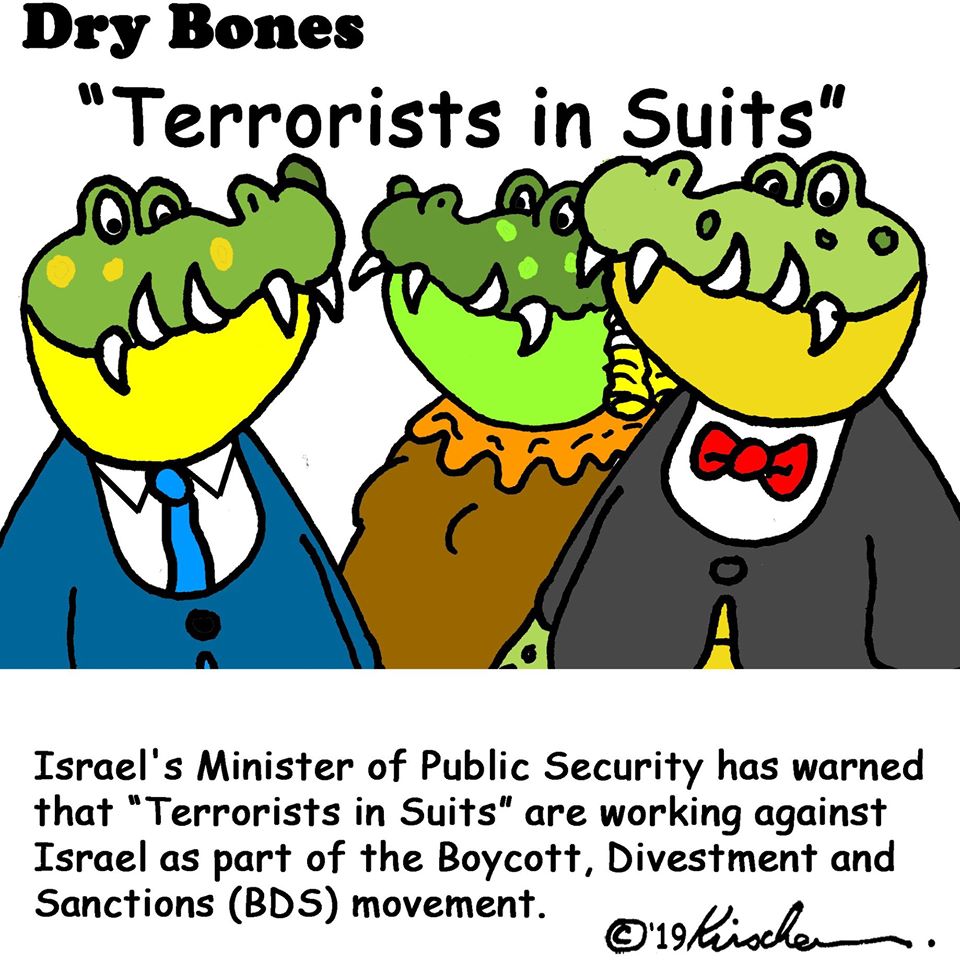
Ministry Of Strategic Affairs Report On “Terrorists In Suits” https://4il.org.il Click to Download the Report.
Click to Enlarge
Uncensored News from Israel and the World
Why Do All These Rabbis Warn Against Getting the Covid-19 Vaccine?
PRAYER TO BE SAVED FROM CORONAVIRUS
Master of Universe, who can do anything!
Cure me and the whole world of the Coronavirus, because redemption is near.
And through this reveal to us the 50th gate of holiness, the secret of the ibbur, and may we begin from this day onward to be strong in keeping interpersonal commandments (i.e. being kind to others).
And by virtue of this may we witness miracles and wonders the likes of which haven’t been since the creation of the world. And may there be sweetening of judgments for the entire world, to all mankind, men women and children.
Please God! Please cure Coronavirus all over the world, as it says about Miriam the prophetess, “Lord, please, cure her, please.”
Please God! Who can do anything! Send a complete healing to the entire world! To all men, women, children, boys and girls, to all humanity wherever they may be, and to all the animals, birds, and creatures. All should be cured from this disease in the blink of an eye, and no trace of the disease should remain.
And all will merit fear of Heaven and fear of God, O Merciful and Compassionate Father.
Please God, please do with us miracles and wonders as you did with our forefathers by the exodus from Egypt. And now, take us and the entire world out from this disease, release us and save us from the Coronavirus that wants to eliminate all mortals.
We now regret all the sins that we did, and we honestly ask for forgiveness. And in the merit of our repentance, this cursed disease, that does not miss men, women, boys, girls, and animals, will be eliminated.
Please God, as quick as the illness came it will go away and disappear immediately, in the blink of an eye, and by this the soul of Messiah Ben David will be revealed.
Please God, grant us the merit to be included in the level of the saints and pure ones, and bless anew all the fruit and vegetation, that all will be healed in the blink of an eye, and we will see Messiah Ben David face to face.
Please God, who acts with greatness beyond comprehension, and does wonders without number. Please now perform also with us miracles and wonders beyond comprehension and let no trace of this cursed disease remain. And may the entire world be cured in the blink of an eye.
Because Hashem did all this in order for us to repent, it is all in order for us to direct our hearts to our Father in Heaven, and by that He will send blessings and success to all of our handiwork.
Important Posts
-
Bill Gates and the Rockefeller Foundation: Vaccine News
-
After Monsey, and New York – Kristallnacht!
- How to help YOUR Relatives Escape from New York
-
A Portrait of Jewish Americans
-
The Jewish People Policy Institute-Raising Jewish Children 2017
- Jonathan Pollard
- We have no other country – אין לנו ארץ אחרת
- You are a Princess
- Modesty for Women – Wig Vs Scarf
-
BDS Know the Facts
- CAMERA: Quantifying the Israeli-Palestinian Conflict’s Importance to Middle East Turmoil
- Warnings to American Jews
- A response to the EU Boycott of Yesha Israel
- Israel is not America
- A School is connected to a Congregation or a Rabbi, Who are they?
- Another reason to use a good Kosher certification hecksher
- Health Risks of Genetically Modified Food or The benefits of keeping Kosher
- What’s in Your Milk? 20+ Painkillers, Antibiotics, and More
- Cholov Yisroel: Does a Neshama Good
- Cell Phones:The Day Einstein Feared Has Arrived
- Death in Advertising – Coke and Cigarettes
- College life in America
- 1 sheep and 70 wolves-Hanukah Geography
- A Heart to Heart talk about Christian missionaries and Jewish Assimilation
- Anatomy of a smear
- Remembering the hard times predating the startup nation
-
Israel: The World’s First Modern Indigenous State
- Rosh Hashanah Foods
- How to assemble an Israeli Succah
-
Hanukkah Posts and Recipes
- 1 January is Sylvester Day יום סילבסטר
- Tu B’Shevat-How and What to check for Bugs
- How to Celebrate Purim
- Purim for Cats: Purim behind the Scenes
- The Day After Purim-How to Prepare for Pesach
- Pesach Tips and Schedule
- Preparing for Pesach
- Sell your Chametz online:
- Pesach Wonder Pot סיר פלא Recipes
- Pesach and Beyond פסח ומעבר
- La Haggada De L’idee Juive
- Counting The Omer ספירת העומר
- Shlissel or Key Challah
- YOM HASHOAH יום שואה
- Yom Hazikaron : יום זיכרון We Remember and Honor our fallen
- Yom HaAtzma’ut- יום העצמאות
-
Shavot Wonder Pot סיר פלא Recipe-Cheesecake
- Tisha B’Av 2013 תשעה באב תשע”ג
- Tisha B’AV Love your fellow Jew

הסערה הבאה שרת התרבות מירי רגב הורתה להכניס ללוגו הרשמי של חגיגות היובל לאיחוד ירושלים את המילה שחרור ירושלים במקום איחוד העיר
נשלח על ידי
איתמר אייכנר
אחרי
Jewish Agency Toll Free Phone Numbers
Nefesh B’Nefesh: Live the Dream
US & CAN 1-866-4-ALIYAH | UK 0800 075 7200 | Israel 02-659-5800 www. nbn.org.il
Alyah : mode d’emploi http://www.jewishagency.org/fr/aliyah/program/7618
Choisissez celle qui vous correspond et inscrivez-vous sur notre site Internet en cliquant ICI ou par téléphone, en appelant le Global Center au 0800 916 647
The Jewish Agency Global Service Center http://www.jewishagency.org/global_centerUS 1-866-835-0430 | UK 0-800-404-8984 | Canada 1-866-421-8912
The Jewish Agency Global Service Center
Point of No Return: Jewish Refugees from Arab Countries
From the 1940s until the 1970s, and heightening with the founding of Israel in 1948, nearly million Jews were expelled from their homes across Arab countries such as Iraq, Syria, Lebanon, Egypt, Yemen, Libya, Algeria and Iran.
Jews were frequently subjected to pogroms, systemic violence and religious persecution. Their exiles were largely attributable to Arab regimes increasing their hostility toward Jews because of the very existence of Israel.
Today, while stories abound of many Arab refugees, few are aware or even acknowledge this forgotten exodus of Jewish refugees. Only in Israel has Nov. 30, the day after the UN voted to approve the Jewish-Arab partition plan of Palestine, been marked to commemorate their plight.
Inspirational Breslev teachings in emunah, bitachon and hitbodedut- today!
Breslov Shiurim Podcasts
Subscribe to Podcasts on RSS, iTunes or Poddirectory

Podcasting Help Five Best Podcast ManagersRav Nasan Maimon | Breslov Torah | Free Listening on SoundCloudRabbiisrael on Sound Cloud

The Canary Mission database was created to expose individuals and groups that are anti-Freedom, anti-American and anti-Semitic in order to protect the public and our democratic values.
1948 Jewish 5 Palestine Pounds Note
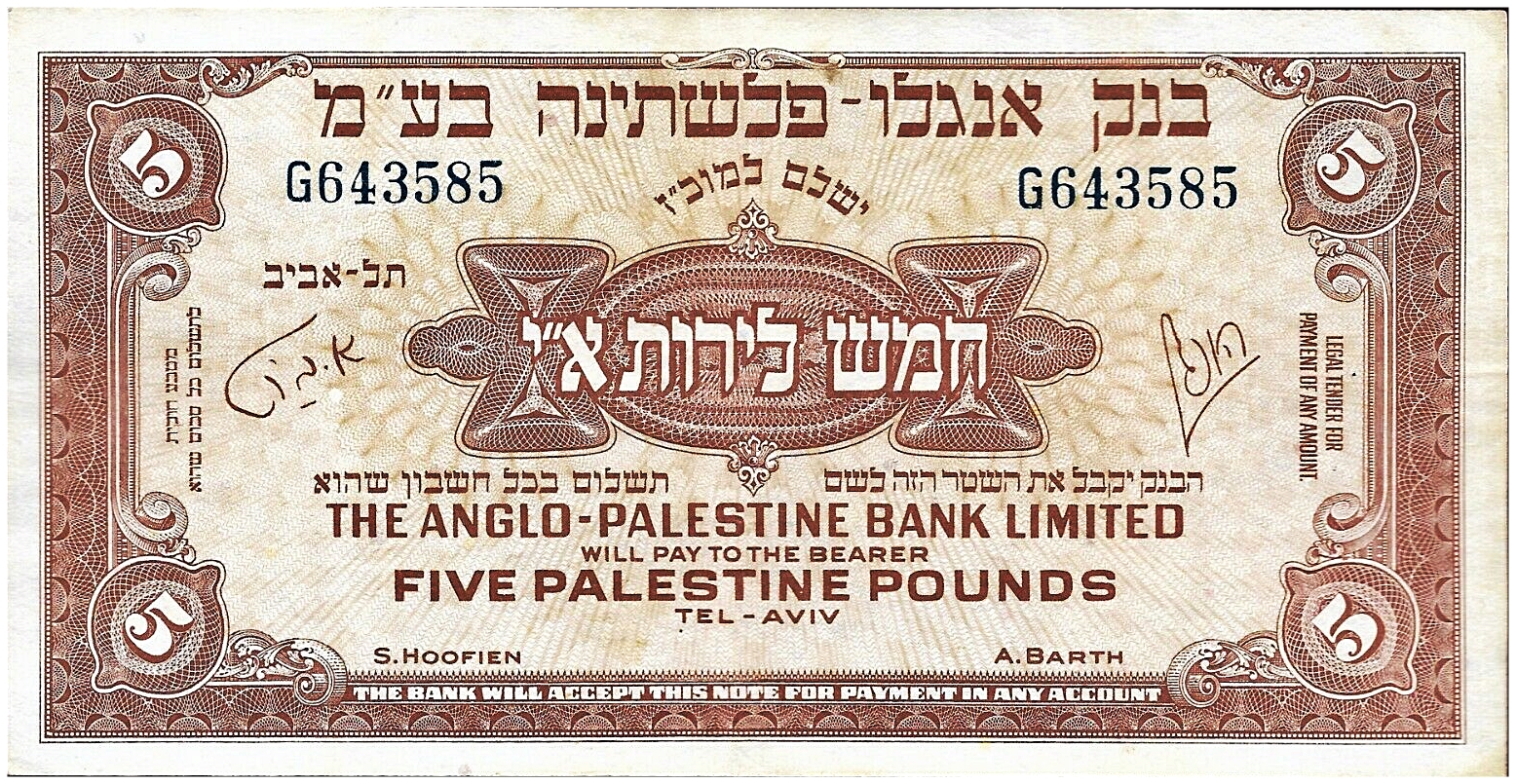
Issuer Israel
Issuing bank Anglo-Palestine Bank Limited
Period State of Israel (1948-date)
Type Standard banknote
Years 1948-1952
Value 5 Palestine Pounds
Currency Palestine Pound (1948-1949)
Composition Paper
Size 105 × 68 mm
Shape Rectangular
Demonetized 23 June 1952
Number N# 207999
References P# 16 April 2024 S M T W T F S 1 2 3 4 5 6 7 8 9 10 11 12 13 14 15 16 17 18 19 20 21 22 23 24 25 26 27 28 29 30 -
An important piece of evidence: The British Palestine Exploration Fund survey map – 1871-1877 – The PEF people delineated every wadi, every settlement, tree, and home. They crisscrossed the territory, and an examination of the map shows how empty and barren the land was, and how few people lived there.
“The Palestinian people does not exist. The creation of a Palestinian state is only a means for continuing our struggle against the state of Israel for our Arab unity… Only for political and tactical reasons do we speak today about the existence of a Palestinian people… to oppose Zionism.” Zuheir Muhsein, the late Military Department head of the PLO and member of its Executive Council.; March 1977, Dutch daily Trouw
London cab driver’s answer to a request from a Muslim to turn off the radio. (You just got to love the Brits.)
A devout Arab Muslim entered a black cab in London .
He curtly asked the cabbie to turn off the radio because as decreed by his religious teaching, he must not listen to music because in the time of the prophet there was no music, especially Western music which is the music of the infidel.
The cab driver politely switched off the radio, stopped the cab and opened the door.
The Arab Muslim asked him, “What are you doing?”
The cabbie answered, “In the time of the prophet there were no taxis, so get out and wait for a camel.”I wonder how many years (hundreds for sure) Jewish people have lived in Quebec. I don’t believe that they have ever demanded that pork be removed from the school’s menu where their children attend…
Excellent reply by the Mayor of Dorval, Quebec, to the demands of the Muslim population in his community.
Put some pork on your fork.
Too bad the USA doesn’t have the common sense to publish this nationwide, even if they have a muslim in the white house. Should also be posted on signs all along U.S. borders.Let’s hear it for a Quebec mayor.
MAYOR REFUSES TO REMOVE PORK FROM SCHOOL CANTEEN MENU. EXPLAINS WHY
Muslim parents demanded the abolition of pork in all the school canteens of a Montreal suburb. The mayor of the Montreal suburb of Dorval, has refused, and the town clerk sent a note to all parents to explain why..
“Muslims must understand that they have to adapt to Canada and Quebec, its customs, its traditions, its way of life, because that’s where they chose to immigrate.
“They must understand that they have to integrate and learn to live in Quebec .
“They must understand that it is for them to change their lifestyle, not the Canadians who so generously welcomed them.
“They must understand that Canadians are neither racist nor xenophobic, they accepted many immigrants before Muslims (whereas the reverse is not true, in that Muslim states do not accept non-Muslim immigrants).
“That no more than other nations, Canadians are not willing to give up their identity, their culture.
“And if Canada is a land of welcome, it’s not the Mayor of Dorval who welcomes foreigners, but the Canadian-Quebecois people as a whole.
“Finally, they must understand that in Canada ( Quebec ) with its Judeo-Christian roots, Christmas trees, churches and religious festivals, religion must remain in the private domain. The municipality of Dorval was right to refuse any concessions to Islam and Sharia.
“For Muslims who disagree with secularism and do not feel comfortable in Canada, there are 57 beautiful Muslim countries in the world, most of them under-populated and ready to receive them with open halal arms in accordance with Shariah.
“If you left your country for Canada, and not for other Muslim countries, it is because you have considered that life is better in Canada than elsewhere.
“Ask yourself the question, just once, “Why is it better here in Canada than where you come from?”
“A canteen with pork is part of the answer.”
If you feel the same forward it on.
This reminds me of a Morty Dolinsky story from the time he was head of the Government Press Office:
When the late Morty Dolinsky was in charge of the Government Press Office in the 1980s, he once famously replied to a reporter, who asked for information about the West Bank, that he knew no West Bank as he banked at Leumi. -
Archives
-
Pages
- About the Artist, Cookbook & Novels
- Aliyah Tips
- Aliyah, Health & News
- 100 Years After Balfour Declaration, The Arabs Have Failed Where Israel Has Excelled
- Aliyah Outer Limits Archive
- Aliyah Outer Limits News
- CAMERA – BACKGROUNDER: The Intrinsic Antisemitism of BDS
- CAMERA: Quantifying the Israeli-Palestinian Conflict’s Importance to Middle East Turmoil
- Jonathan Pollard
- Mr. Happy Good News
- Mr. Happy’s Aliyah Outer Limits
- Mr. Happy’s Banned Health News
- Mr. Happy’s GMO – Genetically Modified Food News
- Mr. Happy’s Health News
- Mr. Happy’s Nuclear News
- Mr. Happy’s Past Weekly Column
- Mr. Happy’s Weekly Column
- Mr. Happy’s Wellness Page
- Mr. Happy’s World News
- Not in the News
- Other News
- Astrology, Gematria & Recipes
- Breslov
- Cat Quintet and Cat Videos
- Cat Quintet: Aurora – The Andrews Sisters
- Cat Quintet: Beach Boys
- Cat Quintet: Bei Mir Bist Du Schon – The Andrews Sisters
- Cat Quintet: Besame Mucho – Xavier Cugat and His Orchestra
- Cat Quintet: Best Meditation Music – Oliver Shanti
- Cat Quintet: Let’s Call The Whole Thing Off
- Cat Quintet: Steppenwolf – Magic Carpet ride
- Cutest Cat Moments Videos
- Debbie’s Worm
- For a-sweet boy, I will always remember
- Sons of the Pioneers – What this Country Needs
- Sons Of The Pioneers: Dixie
- You Are My Sunshine
-
Ephemeris

Sun in Aries
Moon in Virgo
10 degrees
Waxing Gibbous Moon
10 days old -
Spam Blocked

